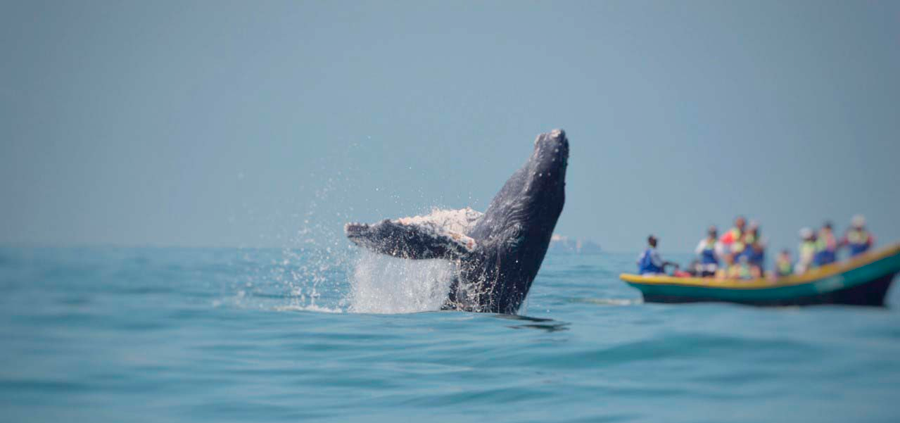The environmental organization WWF Colombia and the scientific community called for “urgent cooperation” to protect the routes of the whales in the eastern Pacific Ocean, the central route for the migration of these cetaceans since they feed, mate and nurse their young in these waters. .
Whales “depend on important oceanic areas to feed, mate, give birth, nurse their young, socialize and migrate” and they “are being impacted by multiple human activities and are under increasing stress,” explained the world leader for conservation. of whales and dolphins at WWF, Chris Johnson, in a statement.
Also known as “blue corridors”, these routes stretch from the Bering Strait in Alaska to the Antarctic Peninsula, located at the southern tip of the American continent, according to data from the latest WWF report.
Through them, twelve of the fourteen species of “great whales” use the eastern Pacific as a “central area for their migrations.”
In the case of Colombia, between the months of July and November, the humpback whale, which is the most recognized species of this type of cetacean in the country, crosses the waters of the Pacific at the height of Nuquí, Bahía Solano and Bahía Málaga, Gorgona Island and Tumaco.
Due to the importance of these corridors for whales, Johnson insisted on the “urgent call for cooperation” for their protection, highlighting, on the other hand, the importance of whale populations in the oceans to “improve marine productivity and play a role in carbon sequestration.
NEW THREATS ON MIGRATION ROUTES
Beyond the commercial hunting that, during the 20th century, brought many species “to the brink of extinction” after the capture of nearly three million whales, new threats are emerging that make migratory routes an increasingly dangerous place. to navigate, WWF said in the statement.
Among these threats are the impact of climate change, especially on cetaceans in the Arctic and Antarctic to the extent that “many of them depend on sea ice and sea ice ecosystems.”
Added to this are incidental catches in fishing gear and ghost nets that, according to the report, constitute the “most important threat to the survival of marine megafauna” which includes not only species and populations of marine mammals, but also turtles, sharks and rays from all over the world.
The proliferation of offshore oil and gas infrastructure, which goes hand in hand with exploration and extraction activities, also impacts whales and their prey through underwater noise pollution or oil leaks. EFE
